
Menu

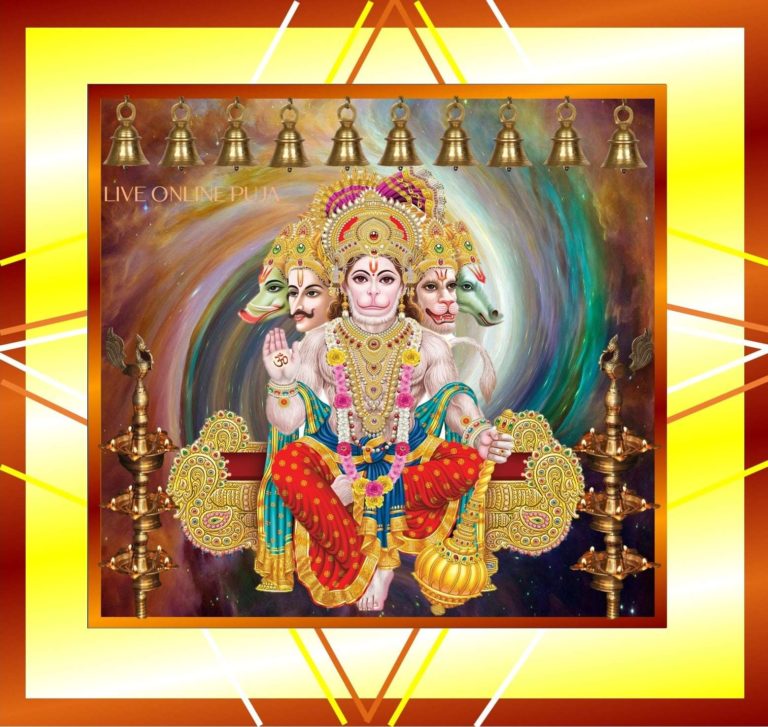
$181 USD







Got Questions? Contact Us Now:
Contact Number:
+ 1 – 647-741-0400 (Canada & USA #)
+ 91 – 888-268-1484 (India # – WhatsApp)
Email:
contact@liveonlinepuja.com
If there is any most efficient way to please Hanuman Ji, then it is Hanuman Chalisa followed by the Path (recitation) of Sunderkand. Doing these with reverence and devotion pleases Bajrang Bali, and he rectifies all the troubles of his devotees. The Ramayana shows the virtues of Shri Ram and his efforts. The entire life character of Maryada Purushottam Lord Shri Ram is contained in the Ramcharit Manas composed by Goswami Tulsidas. Although reading each of its chapters is virtuous and will take one closer to Lord Shri Ram, Sundarkand has been considered the best. Sunderkand is a part of Shri Ramcharit Manas, composed by Tulsidas Ji. The great works done by Hanuman Ji have been described in Sunderkand. Sunderkand is the chapter in Ramayana, which focuses on the story of the power and triumph of Hanuman Ji.
Maharishi Valmiki wrote the entire Ramayana in the Sanskrit language. After that, Tulsidas Ji wrote Ramayana (Shri Ram Charit Manas) in the Awadhi language. Sunderkand is the fifth chapter (kand) of Shri Ram Charit Manas.
Sundarkand describes the departure of Hanuman Ji to Lanka, meeting Vibhishan, meeting Sita and giving her the ring of Shri Ram, the killing of Akshay Kumar, Lanka Dahan, and his return from Lanka. In Sunderkand, Hanuman Ji reaches to the rescue of Mata Sita and provides her with hope of Shri Rama’s long-awaited arrival. The Sunderkand has a special significance for the devotees of Hanuman Ji. By reciting Sunderkand, one gets freedom from fear, strengthening his/her confidence. Those who recite the Sunderkand, especially on Tuesdays and Saturdays, get rid from all the diseases, plagues, troubles, and misfortunes and good news starts knocking on the door for them.
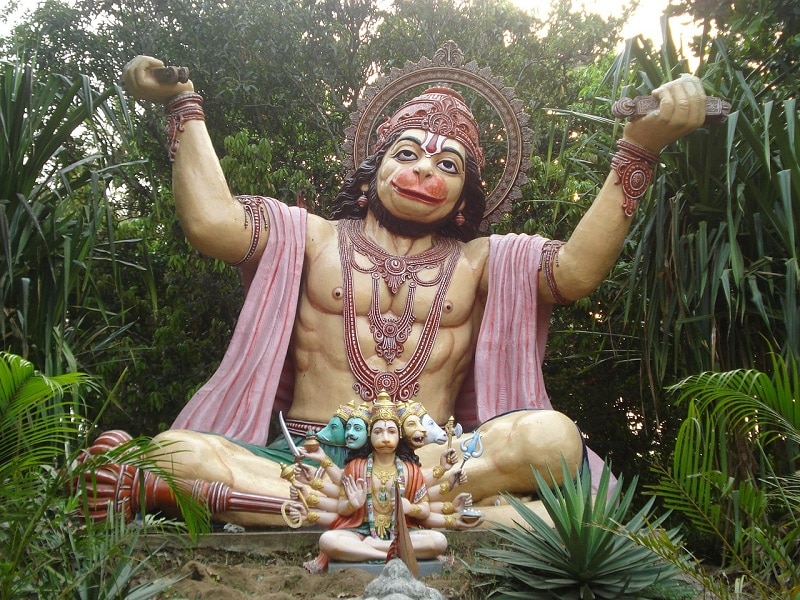
Hanuman Ji discovered Sita with his intelligence and strength. Sunderkand describes the success and valour of Hanuman Ji as he went to Lanka in search of Sita Mata. Ashok Vatika was situated in the beautiful mountain of Lanka where Hanuman Ji met Sita Mata. Their meeting is beautifully described in this episode. Due to this major incident, and the beauty with which Mata Sita and Hanuman Ji meet, as if the meeting of a Son and Mother, this chapter of the Ramayana was named Sunderkand.
The main events of this chapter of Shri Ram Charit Manas include Hanuman Ji’s departure towards Lanka, meeting Vibhishana, meeting Mata Sita, giving her the ring of Shri Ram, Lanka Dahan (burning), and return from Lanka. The entire story of valour gets the well deserved name of Sunderkand
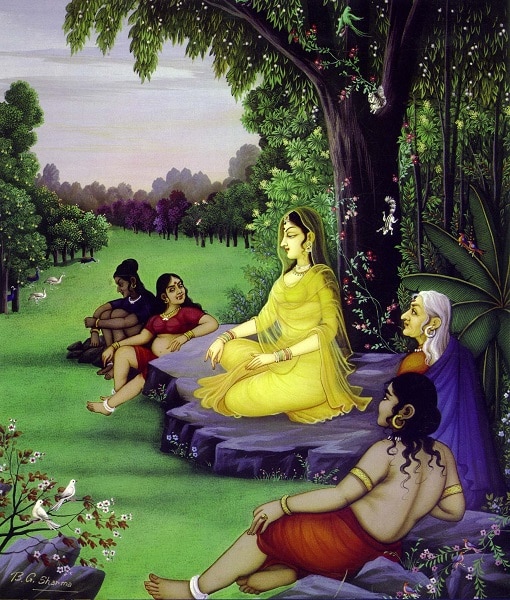
• Sunderkand provides most auspicious results when recited at the time of Brahma Muhurta (1 hour and 36 minutes before sunrise) or evening. The timing for Brahma Mahurat varies every day and one must consult a Pandit to find out the best time for recitation.
• One should not get up in between the recitation of the Path and must complete it in one sitting. The Path should be done with utmost devotion and al taking and distractions must be avoided if possible.
• Also ensure to follow Brahmacharya throughout the day on which Sunderkand Path is performed.
• Avoiding vengeful things, non-vegetarian diet, alcohol, foul word, etc are a must throughout the day if you want to please Hanuman Ji.
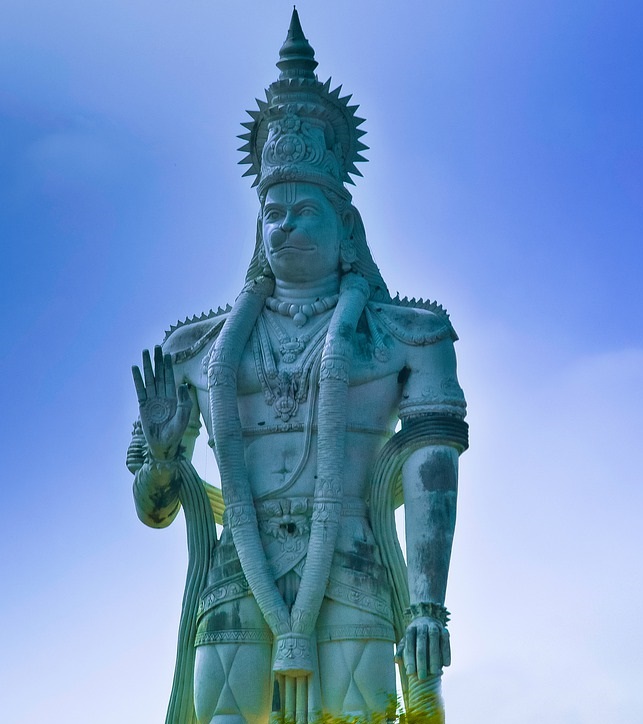
• If one wants to recite Sundarkand alone, it should be done in the morning, between 4 to 6 o’clock in the Brahma Muhurta. If reciting Sunderkand with a group, then it can be done after 7 pm in the evening.
• While reciting Sunderkand, its book should be kept in front of you by laying a clean cloth on a checkpost (chaukee).
• Its book should never be kept on the ground or near the feet.
• Sunderkand can be recited in the clean room of your house or in the temple.
• Before the beginning of the lesson, Hanuman Ji and Shri Ram must be called and farewell at the end.
• A monolithic lamp must be lit during the entire recitation of Sunderkand.
• The pronunciation of all the chaupais of Sunderkand should be clear and flawless.
• Once you start a chapter, get up only after completing it.
• The recitation/reading should not be paused in between if possible, or else follow the rules mentioned above.
• Do not eat or drink anything during the Paath.
• Hanuman Chalisa should also be recited after the recitation of Sunderkand is completed.
• Pregnant women should not recite Sunderkand.
• Do not consume tamasic things like meat, alcohol, smoking, gutka, etc., at all.
• On the day of Paath, do not cut nails and do not cut hair.
• For the whole day of the recitation, follow celibacy.
• Do not buy sharp things like knives or scissors on that day.
• Keep a red handkerchief in your pocket on this day.
• After the Sundarkand Paath, distribute sweets to the children and feed food to Brahmins.
The best days for Sunderkand recitation are Saturdays and Tuesdays. In fact, Tuesday is dedicated to Hanuman Ji and any non-vegetarian food is generally avoided by Hindus on Tuesdays in honour of Lord Hanuman. Sunderkand Path is typically performed with full devotion and in one sitting.
Poornima (Full Moon Day) and Amavasya (New Moon Day) are also considered auspicious for Sunderkand Recitation.
• Firstly, the devotee should take a bath and wear clean clothes for the Puja. After this, make preparations for some Prasad for the Puja. Yellow Ladoo as well as Boondi can be used as a prasad for Hanuman Ji.
• Offer flowers, garlands, tilak, sandalwood, and other Puja Materials to the idol/picture of Bajrang Bali.
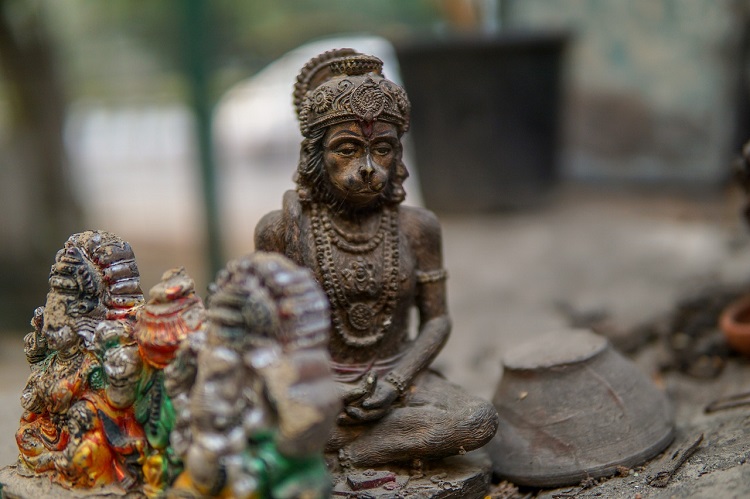
• Light a lamp which is made from either metal or clay, with a cotton wick, dipped in pure Desi Ghee in front of Hanuman Ji. This needs to be kept on during the entire Sunderkand Path.
• Start the prayer with the Aarti or worship to Lord Shree Ganesh, followed by Mantras for Shankar-Parvati, Lord Rama-Sita-Lakshman, and finally Lord Hanuman mantras and Hanuman Chalisa.
• The recitation of Sunderkand Path can now be started. It is optional to call upon a Bhajan Mandali and perform the Path on full scale.
• After completing the Path, perform the Shri Ram Ji and Lord Hanuman. Offer bhog of sweet boondi (droplet like sweet) or jaggery gram and distribute it to all the people present
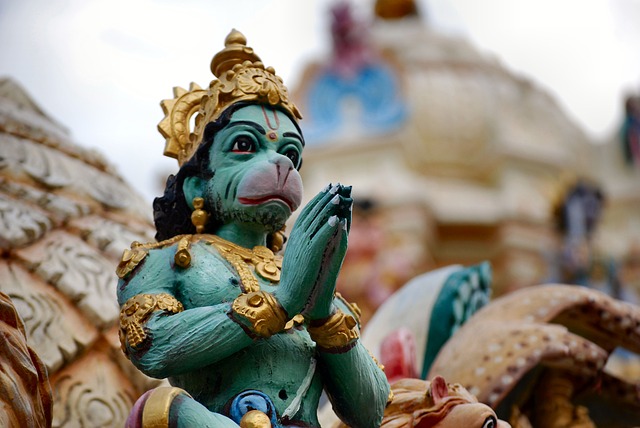
The duration to complete the reading of Sunderkand could be based on the devotee’s situation or convenience or resolution. If one cannot read the entire Path in reading, then alternatives include:
• Read the entire Sunderkand once in one full day.
• Read Chapter 1-35 on the first day and the rest of the chapters on the second day.
• Read Chapter 1-37 on the first day, 37-40 on the second day, and the rest on the third day.
• Read chapters 1-15 on the first day, 16-37 on the second day, 38th chapter on the third day, 39-54 on the fourth day, and the rest on the fifth day.
• Start on a Friday, daily read nine chapters and complete reading on the following Friday. eight days
• Read within nine days, stopping each day on the 5th, 15th, 20th, 26th, 28th, 40th, 52nd, 80th, and 68th chapters.
• Daily read six chapters and complete it on the twelth day.
• Till 22 days read two chapters a day, five chapters on the 23rd day, three chapters on the 24th day, six chapters on the 25th day, three chapters on the 26th day, four chapters on the 27th day, and the rest three chapters on the twenty-eighth day.
• One his journey towards Lanka, Sursa tested the valour of Lord Hanuman and later blessed him after finding him worthy and capable.
• On his way, Hanuman Ji killed the Demon that had the ability to capture shadows.
• Hanuman Ji struck and ended Lankini before being able to enter the city of Lanka.
• When in Lanka, Hanuman Ji got a chance to meet and interact with Vibhishan, who later became their biggest asset against Ravana.
• When Hanuman Ji reached Ashok Vatika, Ravana was threatening Sita. On Ravana’s departure, Trijata (a female demon and the guard of Mata Sita in Ashok Vatika) consoled Sita Mata. Trijita thus became a loyal friend and supporter of Shri Rama and Sita.
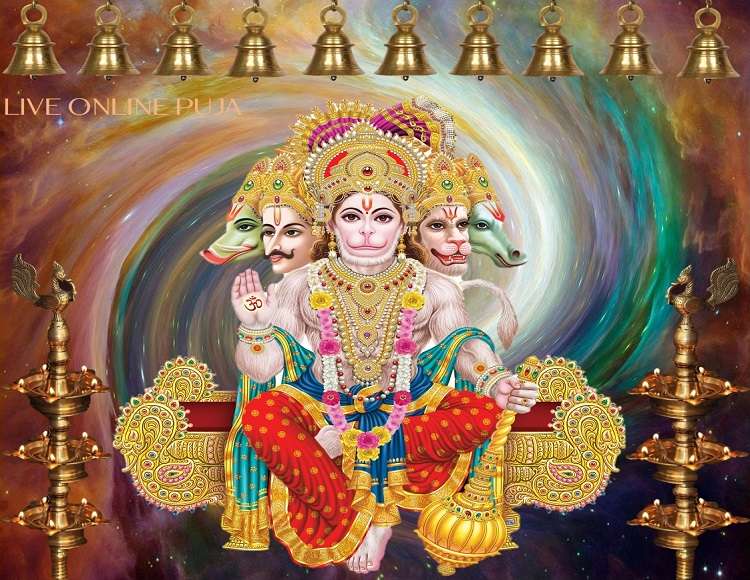
• In solitude, Hanuman Ji met Sita Mata and gave her the ring sent by Lord Rama.
• When Meghnath found out about Hanuman’s visit, he tied Hanuman Ji and took him to the assembly of Ravana. In response to Ravana’s question, Hanuman Ji introduced himself as Shri Rama’s messenger.
• In his anger and pride, Ravana tied Hanuman Ji’s tail with a cloth immersed in oil and set fire to it.
• Hanuman Ji destroyed the Ashok Vatika using the fire on his tail, and killed Akshayakumara, the youngest son of Ravana.
• Before departing from Lanka,Hanuman Ji approached Sita who gave him her chudamani (crest-jewel).
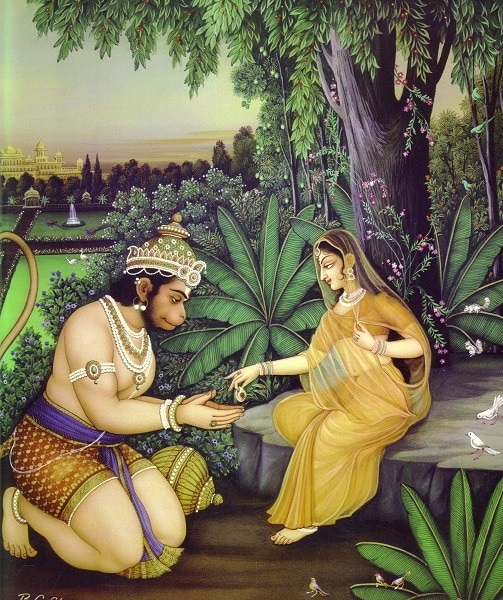
• Lord Hanuman came back across the sea and met a troop of Vanars (who later assisted in the fight against Ravana). He also meet Sugriva on this journey, who became the ruler of Vanara Kingdom.
• In the meantime, Vibhishan explained to Ravana that he should not return Mata Sita to Shri Rama, on which Ravana humiliated Vibhishan and drove him out of Lanka. Vibhishan came under Shri Rama’s shelter, and Shri Rama later declared him the king of Lanka.
• Shri Rama had to cross an immensely huge ocean to make way for his army into Lanka. Samudra (Ocean) himself came in human form and suggested that there are no better people to form a bridge on the ocean, other than Nala and Neel. With the help of these two, Lord Hanuman, and countless others, the bridge was construction and was named Nala Setu in the honour of Nala.
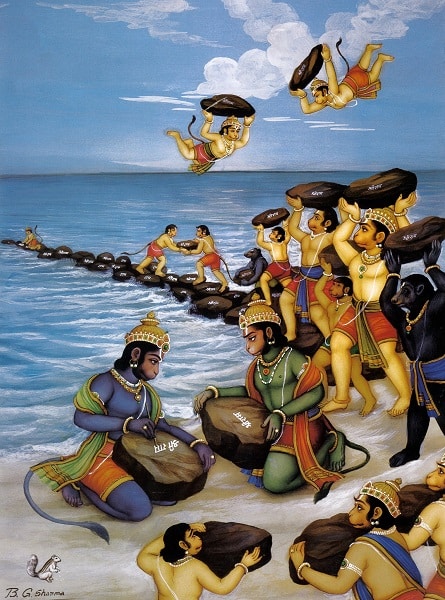
• Problems persist one after another in the lives of some people. Even after a lot of ability and effort, the problem does not end. If one’s life is also beset with problems, do this powerful Path (recitation of Sunderkand) at home, or go to Hanuman Ji’s temple on Tuesday and Saturday. This Path is so powerful that it can get one out of hundreds of problems if performed with true devotion and faith.
• If someone gets involved in a lot of trouble, then sitting in seclusion reciting Sunderkand provides a solution to the problem and comfort to the mid and the soul.
• If the Sunderkand is recited before starting any auspicious works, then that work becomes fruitful.
• If there is a lack of confidence due to constant troubles faced, start the recitation of Sunderkand immediately. Miracles would start appearing soon.
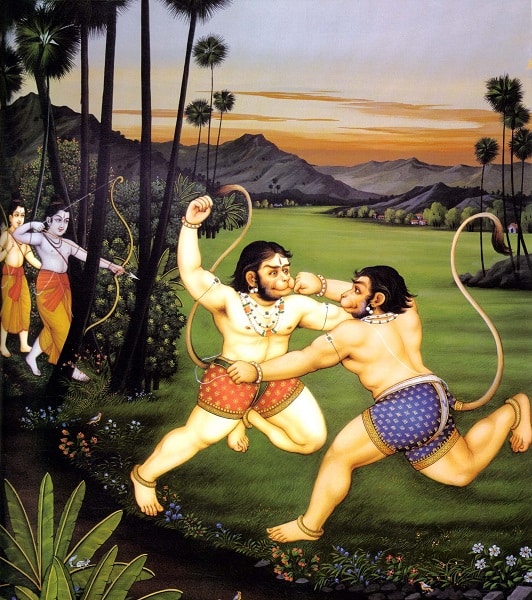
• Sunderkand Path can remove those Doshas in the horoscope, due to which the pleasure of a happy personal life is being denied to a person. In this case, the entire family should recite the Sunderkand Path collectively.
• Regular recitation of Sunderkand Path increases self-confidence, willpower, and makes complex tasks manageable.
• Sunderkand describes Hanuman Ji’s success in the search for Mata Sita, so this Kand (Chapter) is also recited for success in life. Even in adverse situations, there is benefit from the Sunderkand Path.
• The recitation of Sunderkand gives spiritual and mental peace. By doing this, Path person gets mental strength. Due to which persons can do any work and achieve victory based their intellect’s strength.
These tips will help one grab maximum advantage from reading the epic:
• If one reads it alone, it is preferred to recite Sundarkand in the early morning Brahm Muhurat 4–6 am.
• If done in a group, it should be recited after 7 pm to get the maximum benefits.
• One should not get up in between reciting of Sundarkand. Phones, alarms, talking, or breaks should be avoided at any cost.
• It is necessary to take a bath and wear light-colored clothes before commencing the reading session.
The greatness and power of Sunderkand provide equal blessings to everyone. The name of God is like fire. Even if someone touches the fire incidentally, by chance, or without having proper knowledge, his fingers get burned. Similarly, reading this epic will fill life with happiness, prosperity, and blessings of God, even if one read it unintentionally or unknowingly.
By two methods, one can do Sundarkand Paath:
Total worship method: In this method, all the Gods are remembered before reading Sunderkand. One can complete this method only through a knowledgeable and experienced priest.
Simple worship method: This is a very simple method of reciting beautiful verse and know the detail about this method:
• Before reciting Sunderkand, devotees should take a bath and wear clean clothes.
• Keep the following material – Water urn, Dhoop, lamp, floral, unbroken rice, sweet (Prasad), Roli, etc., in one Plate.
• Ramcharit Manas or Sunderkand Book should be placed on a raised red cloth-covered reading platform.
• Establish a check post (chauki) in the east. Lay the red cloth on the outpost.
• Now place the photograph/idol of Shri Ram Darbar and Hanuman Ji. Sit in front of the poster/statue.
• Garland the photo or statue of Hanuman Ji and Shri Ram.
• Light a lamp, a lamp of desi (pure) ghee should be lit. A monolithic (Akhand) lamp must be lit during the entire recitation of Sunderkand.
• Now take a little water in the right hand and take a resolution.
• After this, the idol/picture of Bajrang Bali and Shri Ram should be offered, with respect, flowers, tilak, sandalwood, etc., worship materials. If doing it in a Hanuman temple, then jasmine oil mixed vermilion can also be offered to Lord Hanuman statue. A monolithic (Akhand) lamp of desi ghee should be lit at the temple during the Paath.
• Offer fruits, Jaggery-channa, or laddus in the bhog.
• Before starting the lesson (reading/Paath), first of all, worship Shri Ganesha, then worship your guru, ancestors and then begin the recitation of Sunderkand by worshiping Shri Ram. Between the middle and more, Lord Rama should be remembered. The more one pays attention, the more one recites Lord Rama’s name during Sunderkand, the more benefits one can get.
• Concentrate only on completing.
• After the Paath is over, recite Hanuman Chalisa. By reciting Hanuman Chalisa with Sunderkand, there is an increase in wealth and grain.
• After this, perform Shri Hanuman Aarti and Shri Ram Ji Aarti and give Aarti and Prasad to those participating in the Paath.
• Before starting Sunderkand Paath, definitely invoke Hanuman Ji and Ram Chandra Ji.
• When the Sunderkand Paath is over, after offering bhog to God and doing Aarti, also bid him farewell.
• After the recitation, wrap the Sundarkand in a red cloth reverently and keep it at the place of worship.






